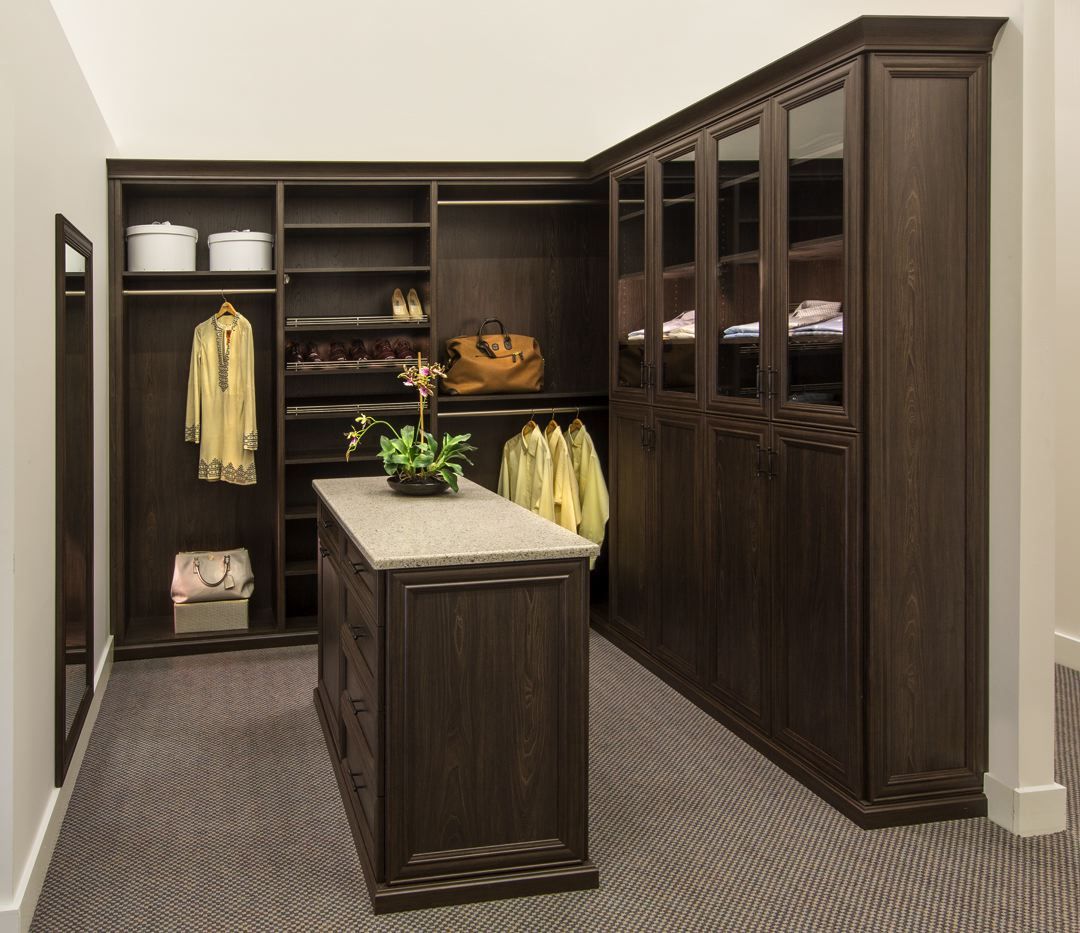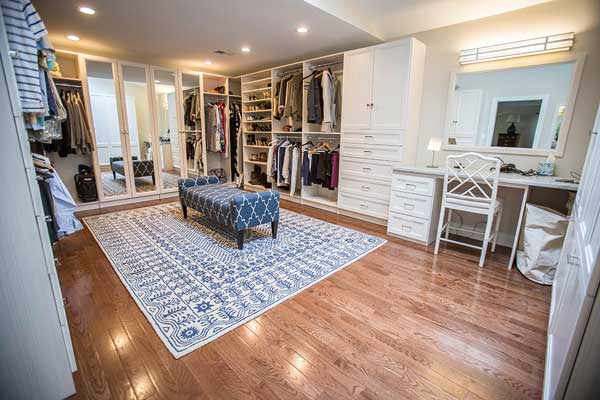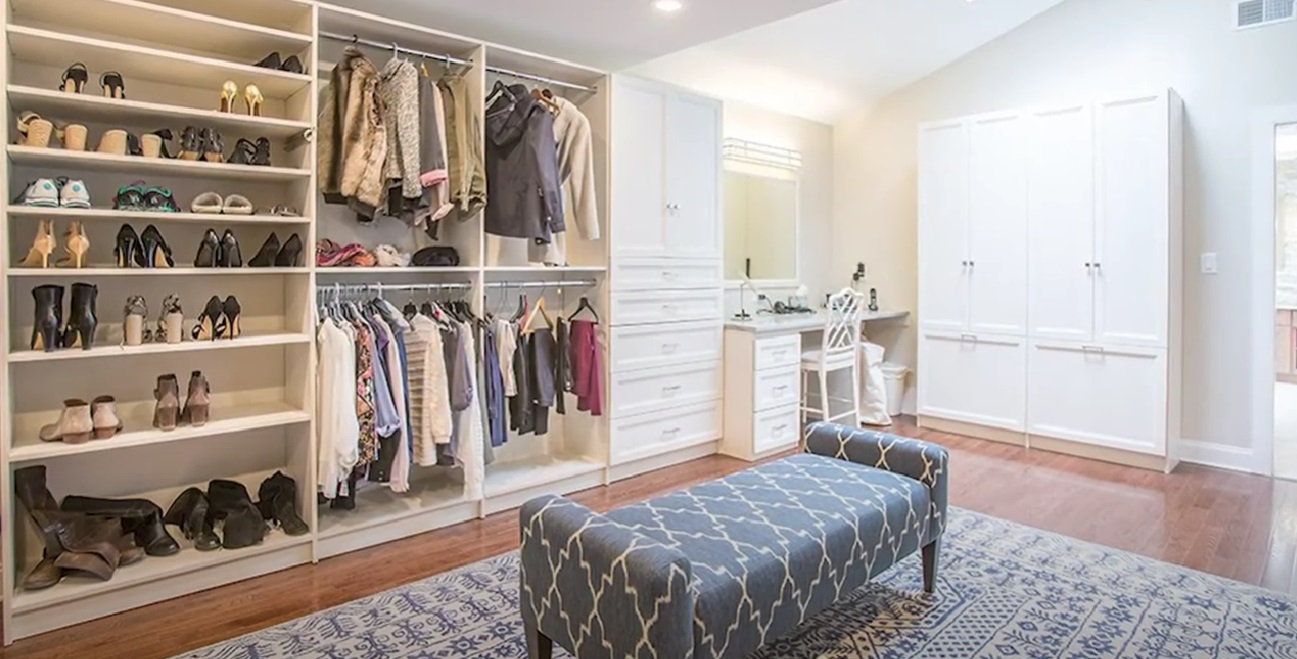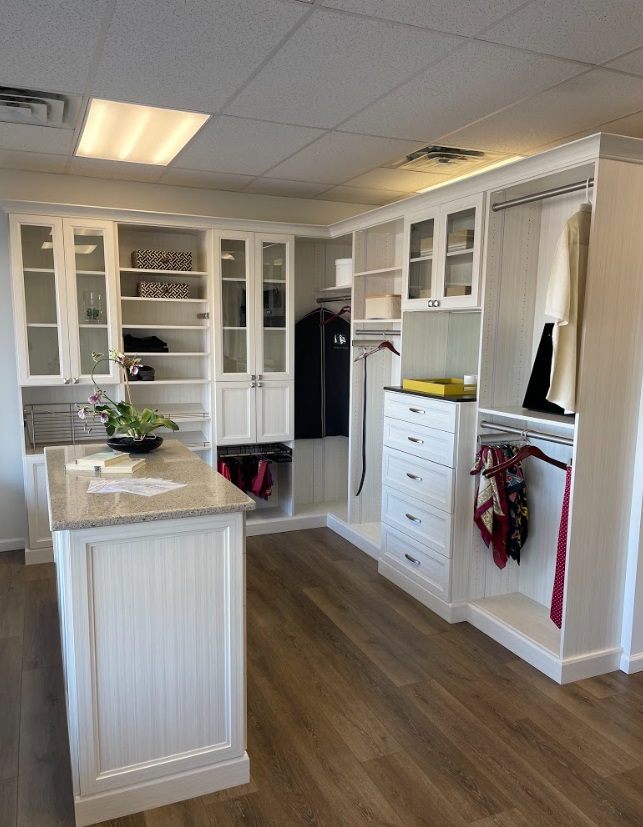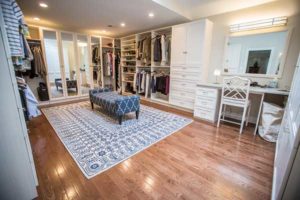 Have you ever seen a stunning, expansive walk in closet that’s bigger than your first apartment? Maybe you’ve seen photos in home design magazines or episodes of shows on HGTV with incredible closets of celebrities, designers, or just people with lots of clothes and money to spare. It’s hard to tell how much of this is real and practical or how much is just for show. But if you are starting to imagine the closet of your dreams and are not sure what part of your vision can be real and what part is fantasy, here are a few tips to help you understand design possibilities.
Have you ever seen a stunning, expansive walk in closet that’s bigger than your first apartment? Maybe you’ve seen photos in home design magazines or episodes of shows on HGTV with incredible closets of celebrities, designers, or just people with lots of clothes and money to spare. It’s hard to tell how much of this is real and practical or how much is just for show. But if you are starting to imagine the closet of your dreams and are not sure what part of your vision can be real and what part is fantasy, here are a few tips to help you understand design possibilities.
- Understand your space. The layout and dimensions of spaces can be deceiving, and there are often more possibilities for custom closet design than first meet the eye. You probably don’t want to add an addition to your house just to accommodate a new closet (although you could!) but what about that third bedroom that you no longer use? What about the attic and the basement, or an entrance hallway or space under the stairs? Depending on whether you envision a master bedroom walk-in closet or just some additional storage, chances are you already have the space.
- Think dimensionally. When contemplating closet and storage possibilities, the first dimensions that come to mind are width and height. But both can be used with varying degrees of effectiveness, yielding more or less space for storage. For example, can you get more out of your closet space by extending shelves up to the ceiling, or by having a single top shelf above your hanger rod? Should your closet system extend to the floor and include a toe kick (looks great but takes up about 3 to 5 inches of space), or would a wall mounted system offer more opportunity for storing shoes, boxes and other items? And how deep can your closet be? Don’t make it deeper than your arms can reach!
- Find your center. Consider designing from the center outward. For example, let’s say you have a standard reach-in closet space that you want to redesign. Imagine a hutch or dresser in the middle of the space with a half dozen drawers, and then on either side you can have hanging areas for his and her clothes. Maybe it might be more practical and offer more storage space to have a long hanging space on one side and a medium hanging space on the other with room for shelves, shoe racks, or hampers. And you still have room above the center dresser as well.
- Not all drawers are equal. Drawers can be made to suit any needs, so consider the possible depth of your drawers both front to back as well as how deep the drawers themselves are, in other words, their height. A drawer that is only 4 inches deep is not going to help you store many sweaters, but a deeper drawer would. Will you be storing jewelry in your top drawer? Then maybe that drawer can be thinner and include a nice felt jewelry tray, thus allowing room for deeper drawers below.
- Flexibility adds space. Consider the use of your closet storage system over time. For a good portion of the country, there are 4 very distinct seasons, each with their own clothing needs. So maybe you should consider adjustable shelves, and even keep an extra shelf or two on hand. In the fall and winter, when storing big, bulky sweaters and winter clothes, a four foot shelving unit might only be able to accommodate 3 shelves. But in the summer, when you put those sweaters in the attic for storage, maybe you can add another shelf or two to accommodate your extensive t-shirt collection.
- Take a second look. You’ve imagined your dream closet, and now you’re ready to call an installer and get the ball rolling. Before you make any final assumptions, take a good, hard second look at your space. Is there a power outlet or pipe enclosure that you did not account for? Does access to the fuse box happen to be right in the middle of your dream closet? Is there a peculiar bend in one wall, or an odd angle that is going to throw off the symmetry of your design? Any qualified custom closet designer will notice these anomalies right away, but don’t set yourself up for disappointment. Have a look around with a critical eye and ask yourself if there is anything that you did not take into account.
Designing a custom closet or storage solution can be a rewarding experience, especially when you partner with a qualified installer. You can start imagining the closet of your dreams anytime, but use these simple steps to make sure you understand both the possibilities and the reality that your space provides.
